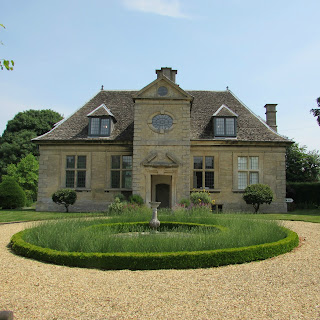The Gallery is far more beautiful than I imagined, and is
currently housing an exhibition of work by two Lincolnshire artists: Lyn Lovitt and Mike Lovitt. Lyn's Pregnant Pots are really beautiful, and her print line is echoed in Mikes simplicity of line in his relief carvings.
The building was originally a school funded by Charles Read in the 1660s who made his fortune importing through Hull. Hull was a major importer of wood and I will be interested in finding out whether this is where his fortune is from.
The school was converted into a Gallery and library in 1965 to commemorate the life of local aristocrat and art collector Timothy Willoughby de Eresby, who died when lost at sea. Within this small village in almost the centre of England, there are these links with the international, the sea and the local.
Corby is a name with nordic origins meaning small woodland. The "Glen" was added in the 50s to distinguish it from the other more industrial Corby and is named for the river. This area would have been covered by the Danelaw.
The gallery itself is really quite beautiful, with views of farms and the bowls green from the windows. I am delighted to be showing here.
As I walked round Corby Glen most people were either at work or hiding from the heat, the streets were almost empty. Wherever you are in Corby Glen you are close to the edges, close to the fields which surround it. I have a sense of a place leading onto another, of a rich history which has probably be more well documented than you would expect for a community of its size.
The landscape in this part of Lincolnshire is not the flat lands of my personal stereo type or babyhood, but soft limestone hills. The presence of limestone and the colour of the soil in places makes me wonder whether there might be ochres in this soil.
The other materials which seem relevant are wool, wood, straw, charcoal...
There is a friendly talkativeness in the people I have met so far, I am really looking forward to collecting stories here. I have already heard about firefighters pulling horses out of ditches, of girls driving through the village as children jealous of the Corby Glen children freed from school for the day for the Sheep Fair, of the appeal of watching the automatic sprinkler on the bowls green.............
And in the initial bits of research that I have been doing of a Motte without a Bailey, viking hieritage, a village doubling in size between the 1979 (when David Steel wrote a history of the place) and now. So while this is a place of long history, mentioned in the Doomsday book, it is also a place of change.
I have taken a load of photos but will need to take more. My current feeling is of peering into something new, where there is more beyond, and perhaps more beyond that too.










Post a Comment